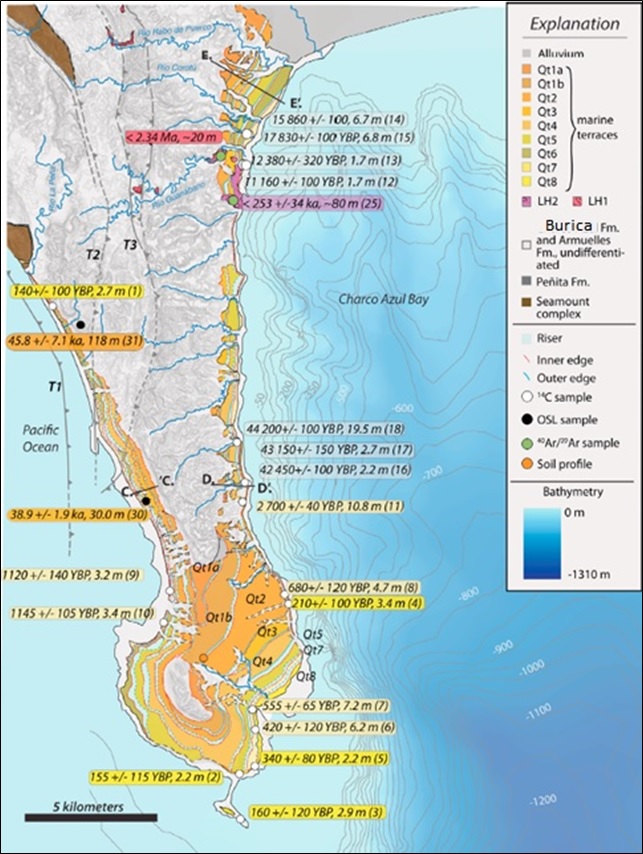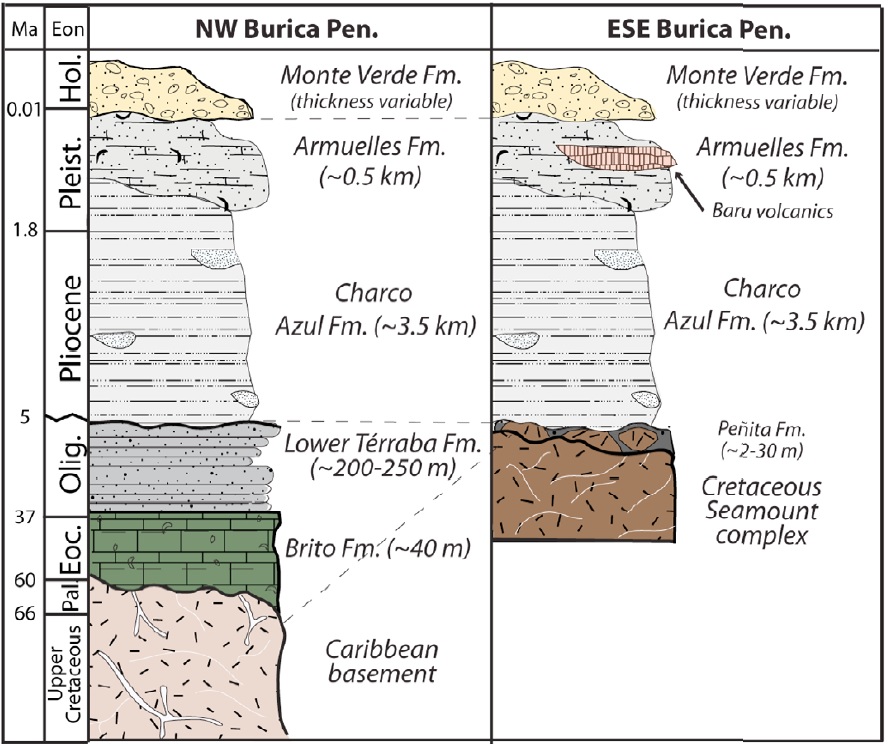Monte Verde Fm
Type Locality and Naming
On the Burica Peninsula - as many as eight laterally extensive marine terraces (Qt1 to QY8) (Figure 046, RIGHT)
Synonym:
Lithology and Thickness
Thickness: Variable from 1 to 10 m.
[Figure 113. Stratigraphic column of the Burica Peninsula showing the position of the Monte Verde Fm. (See also Qt1 to Qt8 in Figure 046, Right). Morell et al. (2011).]
[Figure 114. Photos of marine terraces on Burica Peninsula that make up the Monte Verde Fm showing (a) tread surface of extensive marine terrace Qt4. (b) Close‐up from “a” showing unconformity between underlying mudstones of the Charco Azul Fm and magnetite‐rich marine terrace sands for terrace Qt4. (c) Coastal outcrop of Holocene marine terrace near Pavones, Costa Rica, northwestern Burica Peninsula. (d) Photo showing soil profile within Qt1b, second highest terrace in southern Burica Peninsula. Note the lack of red soil development. (e) Photo showing modern marine platform and wave‐cut notch associated with marine terrace Qt7 on the Costa Rican beach, with view looking south. Morell et al. (2011).]
GeoJSON
Fossils
Age
Depositional setting
Additional Information


